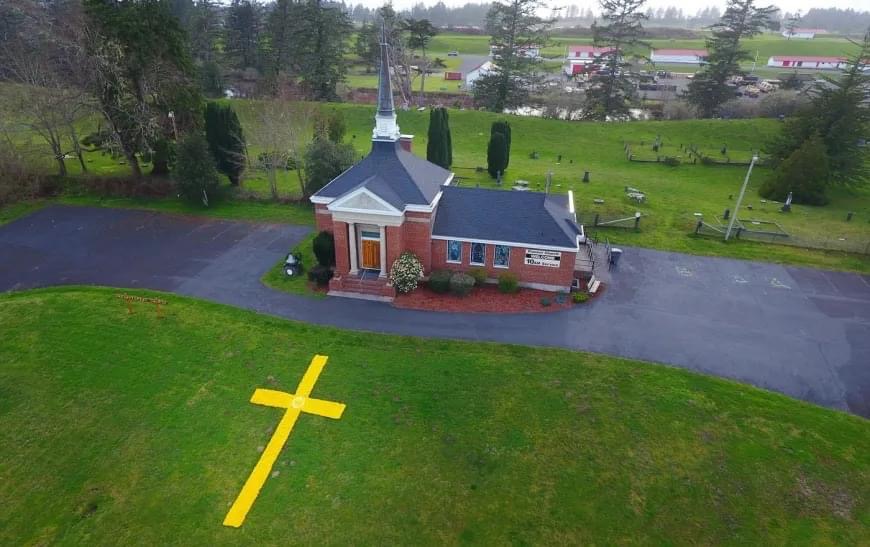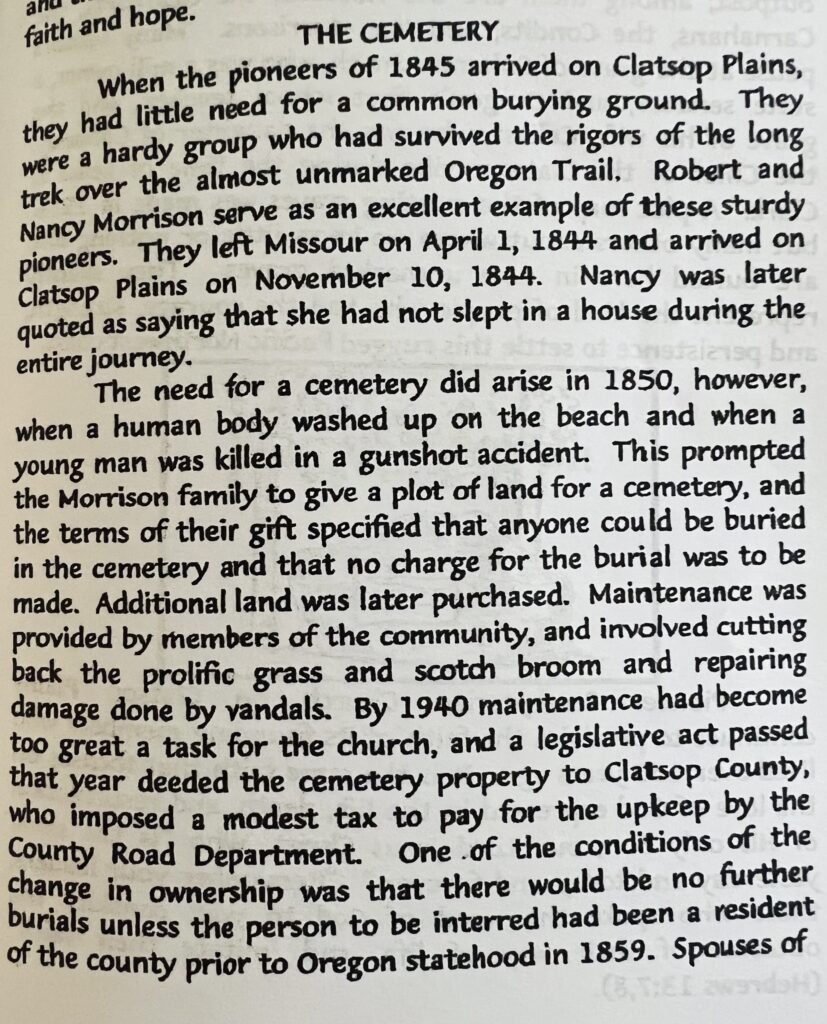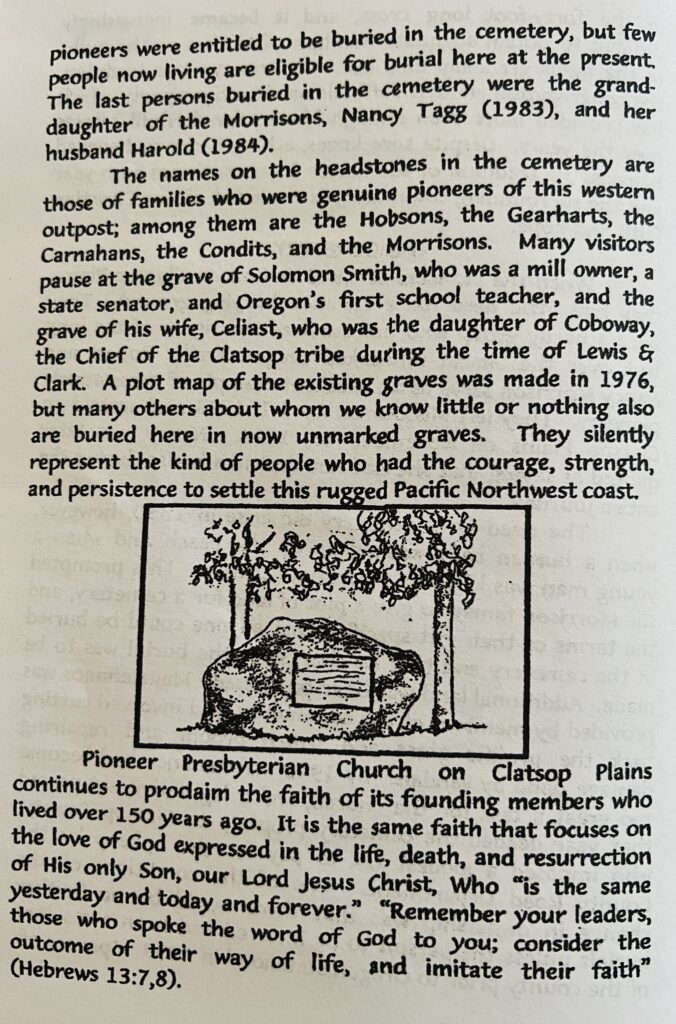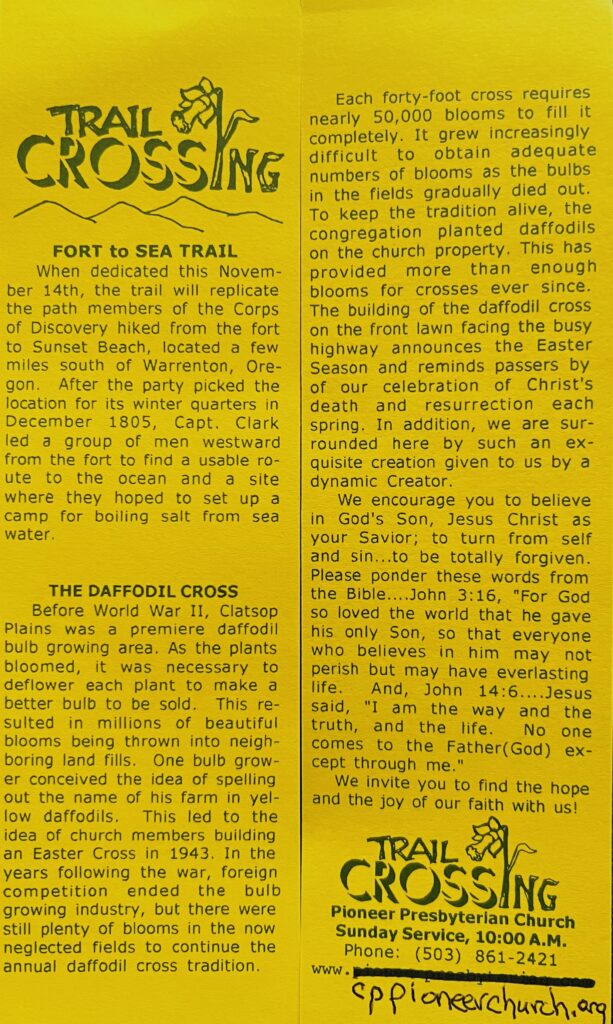

CONSTRUCTED IN 1927 | WARRENTON, OREGON
Warrenton’s broad dunes were home to the Clatsop people who hunted and fished along its slender finger lakes. In the 1840s, settlers arrived and converted the rolling landscape into farmland.
In 1846, William H. Gray established what is now the oldest, continuous Presbyterian church west of the Rockies. A trail used by the Clatsop Indians, later used as a primitive highway for Portland excursionists, was also used by farmers to attend weekly services. That trail is now U.S. Highway 101.
Much like today, early parishioners prided themselves on order and record keeping. However, the church’s first 30 years of documents were lost by the Rev. Matthew G. Mann, the congregation’s second pastor. One dark, foggy morning, he misstepped off an Astoria steamboat dock and fell into the river. As he struggled, he let go of a bag containing records and sermons thought to be “too dry to sink.”
The current building was constructed many years later and is based on American Colonial designs. Commonly known as Pioneer Presbyterian Church, it’s brick-clad facade, formal pedimented entry and soaring central spire are easy to spot from the highway.
Don’t miss the cemetery behind the church. It includes graves of some of the area’s earliest settlers.
By John Goodenberger
https://www.discoverourcoast.com/
William H. Gray
“William H. Gray, the 11th child of a Scotch Presbyterian minister, was born in Fairfield, New York on September 8, 1810. As a young man he studied cabinet making and medicine. In 1836, he joined the Whitman-Spalding party as a lay worker. Dr. Whitman settled on the Snake River to work among the Nez Perce Indians. During his first yeer with the mission, Gray was kept busy erecting buildings and improving the properties at Wailatpu and Lapwai. (Near the present Walla Walle, Wash.) Then he was sent back east for supplies and to recruit more workers for the miss- ion staff,
This return journey almost ended his career. For, in addition to the normal hardships encountered, the party was captured by hostile indians, robbed of all their possessions and turned loose to make their way as best they could without the aid of their indian guides who had been killed in the skirmish. Undaunted, Gray persuaded two missionaries and their wives to sign up with the American Board of Missions and secured a lifetime partner for him- self when he married Mary A. Dix. In 1838, he set out for the second time, to make the long difficult trip over the mountains to the promised land.
Upon arriving at the mission, Gray was assigned to Lapwai as Mr. Spalding’s assistant. Gray, when he first
joined the American Board, had been promised a post of his own, When,
for various reasons this promise was not fulfilled, he asked to be relieved of his responsibilities and left the mission in 1840.
He moved to Salem and went to work as a lay worker for the Methodist Mission at a salary of $4oo a year. During this period he was active in the Wolf and Champoeg meetings and worked hard to establish a provisional government. He was elected to the first Legislature.
In 1846, Gray moved to a farm on Clatsop Plains. Once again he made a trip back east; this time to
purchase sheep for his farm, After successfully negotiating his third journey “West”, the sheep were all drowned when a sudden storm upset the barge just as Gray was almost home,
The Gray family moved to Astoria in 1855. From then on, he engaged in many varied enterprises–built and opereted @ saw mill, mined, built and operated a supply ship to the mining camps, and wrote the first History of Oregon.
His final act of public service. was to initiate a drive to raise money for a suitable memorial for his old friend and co-worker, Dr. Marcus Whitman, Although Gray did not live to see the marble shaft erected, he and his wife now rest under a shaft of their own beside that of Dr. Whitman’s,”
by Dorothy wife of Rev. Clarence M, Baerveldt, 1968
https://archive.org/details/edharvey.13.005.013/page/6/mode/2up
OREGON STATE ARCHIVES: A 1940 OREGON COAST TOUR
The road turns southward, passing the GRAY MEMORIAL CHAPEL, (R.) 11.2 m. [Southbound from Astoria] on the site of an early Presbyterian church. Worshipers belonged to a congregation organized in 1846 by the Rev. Lewis Thompson and other early settlers. W.H. Gray, one of the founders, wrote the first local history of Oregon, published in 1869. The chapel erected by his daughter is a square brick structure with a very long and somewhat lower brick wing. The roof of the main unit rises to a square bell tower topped by a steeple. The pedimented entrance portico has walled sides and a recessed entrance between tall columns.
Aerial Drone Photo of Pioneer Presbyterian Chruch by Lamping Photography
— at Pioneer Presbyterian Church.
Clatsop Pioneer Cemetery


